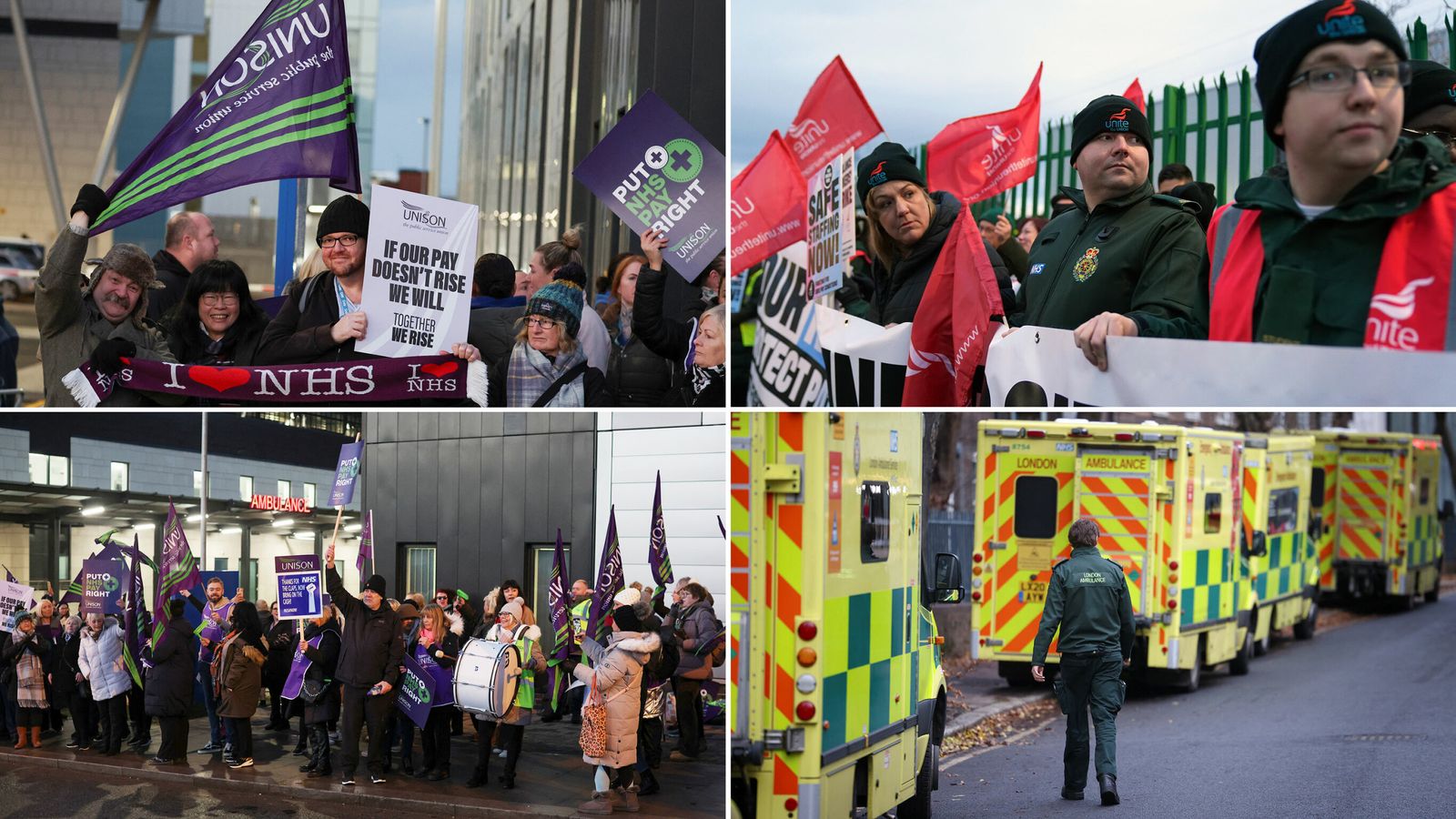SACRAMENTO, Calif. California voters will decide March 5 whether to pump billions more dollars into combating the nations worst homelessness crisis, an investment Democratic Gov. Gavin Newsom argues will finally provide the housing and treatment so badly needed by tens of thousands of homeless people.
This story also ran on The Sacramento Bee. It can be republished for free. Are you covered by Medi-Cal?
We want to hear about your experiences and, with your permission, may incorporate your story into our coverage. Please tell us what it has been like for you as you have sought and received care, including the good and the bad, the obstacles and the successes.Share Your Story
Newsom is spearheading Proposition 1, a $6.4 billion bond he says would fund 11,150 new beds and housing units for people living on the streets with untreated mental illness or addiction, and ongoing capacity for 26,700 additional outpatient appointments. It would also alter how $3 billion to $4 billion in existing annual tax funding for mental health services is spent, funneling a hefty portion of it into housing.
Many authorities on mental health and homelessness agree California desperately needs thousands more housing units and treatment beds to successfully attack the growing public health crisis. Health and law enforcement groups have lined up behind the initiative, as have the mayors of the states major cities.
Homelessness statistics in California have risen a staggering 20% since Newsom took office in 2019, to more than 180,000 people 68% of them on the streets and not in shelters. The numbers are growing despite Newsoms unprecedented investment of more than $20 billion in homelessness programs, plus billions more for health and social services.
Yet many of the front-line workers implementing Newsoms initiatives fear that Proposition 1 would simply pour more money into a broken homelessness response system that is largely failing to house those in need.
Rather than focus on getting homeless people into mental health and addiction programs and ultimately into housing many caseworkers say they waste precious time and taxpayer dollars searching for their homeless clients after encampments have been cleared by state and local officials, a policy Newsom has encouraged, not only for the safety of homeless people but for those in surrounding neighborhoods.
Once they locate their clients, advocates must help them often repeatedly obtain food, clothing, and medication refills, and replace official government documents like birth certificates and IDs. You cant get housing without that stuff, said Afton Francik, an outreach worker with the Sacramento-based nonprofit Hope Cooperative, which is implementing several of Newsoms homelessness and mental health initiatives. Outreach workers Greg Stupplebeen (from left), John Harding, and Afton Francik, who work for the nonprofit homeless services organization Hope Cooperative, comb the streets of Sacramento searching for homeless people who need housing and services.(Angela Hart/KFF Health News)
Perhaps the biggest challenge they face, outreach workers and case managers say, is rebuilding the trust that took time to establish and which they say is essential to getting people into treatment and housing.
It makes it so much harder to even find people or help them get into housing because you have to go back and repeat that work you already did, Francik said.
Newsom says California has placed at least 71,000 people indoors either in permanent or temporary housing since he took office in 2019. State money flows to cities and counties, which have opened at least 15,000 housing units and 2,485 residential treatment beds, plus additional outpatient capacity, during his tenure.
Newsom has also revamped health programs to get people off the streets, including a massive $12 billion transformation of the state Medicaid health insurance program that provides some patients with housing and one-on-one case management services.
As he promotes Proposition 1, Newsom is calling for stricter enforcement, saying he feels a deep responsibility to keep Californias streets clean and safe, and to respond to growing neighborhood concerns about trash, mental illness, crime, and drugs. He has acknowledged that sweeps can traumatize homeless people but argues that local officials who receive state money to clear encampments are supposed to find shelter or treatment for those displaced. Email Sign-Up
Subscribe to KFF Health News' free Morning Briefing. Your Email Address Sign Up
Sacramento County Sheriff Jim Cooper, who supports Proposition 1, said sweeps are sometimes necessary for public health and safety.
This is a huge drain on public resources and emergency services, Cooper said. Drugs are everywhere. There is so much mental illness. Weve got to get these folks the help and treatment they need.
But critics of the sweeps argue that its inhumane to forcibly move people without providing shelter or housing. Were seeing a ton of enforcement, but theres literally nowhere to put people, said Crystal Sanchez, president of the Sacramento Homeless Union.
Newsom acknowledged the state doesnt have enough housing for everyone who needs it, and that Proposition 1 is part of the solution. The measure would expand his existing housing and treatment programs, which do not trigger the land use and environmental reviews that often delay or kill new projects.
We are in a unique position to take what we have been promoting these promises and make them real, Newsom said in January. Greg Stupplebeen uses his tablet in the field to get homeless clients into the Homeless Management Information System, which is used to place people into housing.(Angela Hart/KFF Health News)
Like all of Newsoms homeless housing initiatives, Proposition 1 would rely on outreach teams and caseworkers to help homeless people obtain services and housing.
But in boots-on-the-ground interviews from rural Northern California to San Diego, such workers said it would be difficult to get more people into housing if they must continue picking up the pieces after encampment clearings a policy the U.S. Supreme Court will scrutinize in April.
The question the court will consider is whether to allow criminal or civil penalties against homeless people living outdoors if no shelter or housing is available. Newsom said in an amicus brief that cities and counties should be allowed to clear encampments, signaling he has no plans to retreat from the policy.
When encampments are being cleared by law enforcement, it totally upends peoples lives and violates that trust in a way that theyre going to be more resistant to help, said Hannah Wesolowski, chief advocacy officer for the National Alliance on Mental Illness, whose California chapter supports the ballot initiative. If someone has a mental illness and is unhoused, trust is the most important thing in trying to engage them in treatment and actually getting them into housing.
Take Samuel Buckles, a longtime Sacramento resident who said he struggles with mental health and is addicted to fentanyl. Buckles, 53, lost his home in a fire and then his job early in the covid-19 pandemic. Since then, he has worked odd jobs as a handyman and purchased a recreational vehicle that he parked around Sacramento and called home. Samuel Buckles prepares to pack his tent and belongings on a recent rainy day in February after code enforcement officials told him to leave the private property where he was camping. His RV had been confiscated just days earlier in a homeless sweep.(Angela Hart/KFF Health News)
When law enforcement officials cleared his camp in early February, they confiscated his RV because he had allowed the registration to lapse. He lost his birth certificate and Social Security card, all his medications for diabetes and high blood pressure, his extra clothing, and a fridge packed with groceries hed recently purchased with his food stamp benefits.
That was my home and everything I had in theworld, Buckles said on a cold February morning from his new form of shelter: a tent donated by outreach workers.
It was the first time in years he said he had truly felt homeless.
In mid-February, law enforcement cleared the encampment he had relocated to, forcing him to move again. Feeling despondent, he said he had given up on the promise of housing. Please make this pain stop. I dont know how much more I can take, he said.
Buckles was able to grab a few possessions from his RV after it was confiscated, but replacing the documents he needs for housing may take months and repeat visits by outreach workers, said Greg Stupplebeen, an outreach manager with Hope Cooperative.
Even if Buckles had his paperwork in order, theres nowhere to put anybody right now, Stupplebeen told him. Samuel Buckles with his dog in Sacramento. He has been homeless for years. Please make this pain stop. I dont know how much more I can take, he said.(Angela Hart/KFF Health News)
This article was produced by KFF Health News, which publishes California Healthline, an editorially independent service of the California Health Care Foundation.
Angela Hart: ahart@kff.org, @ahartreports Related Topics California Elections Health Industry Mental Health Rural Health States California Legislature Homeless Legislation Substance Misuse Contact Us Submit a Story Tip







